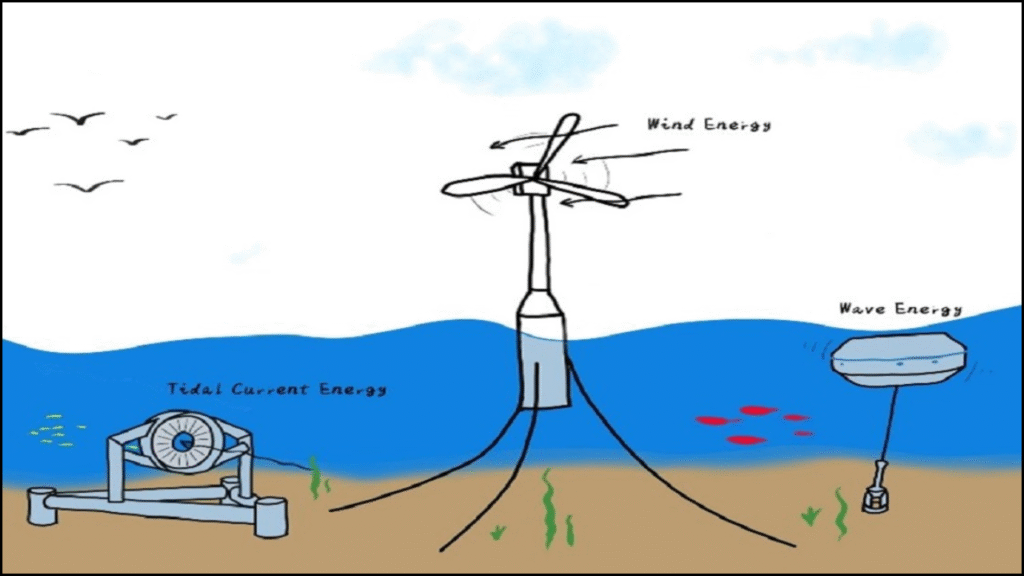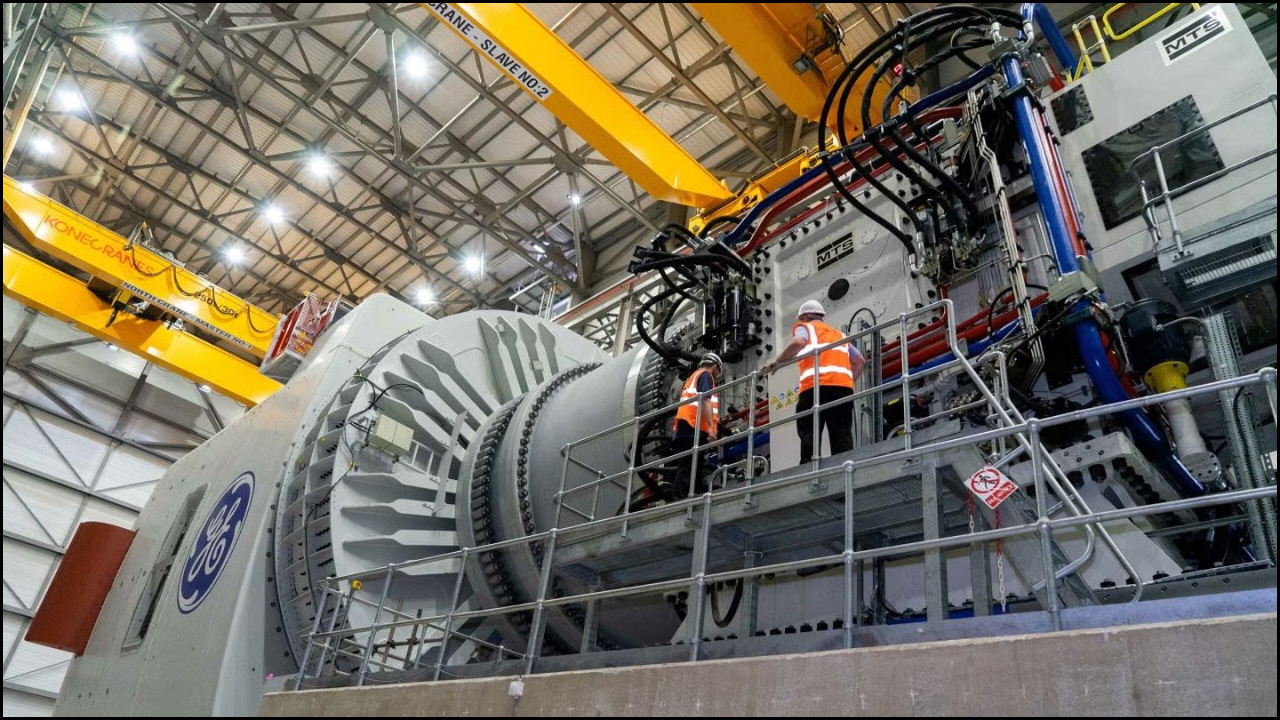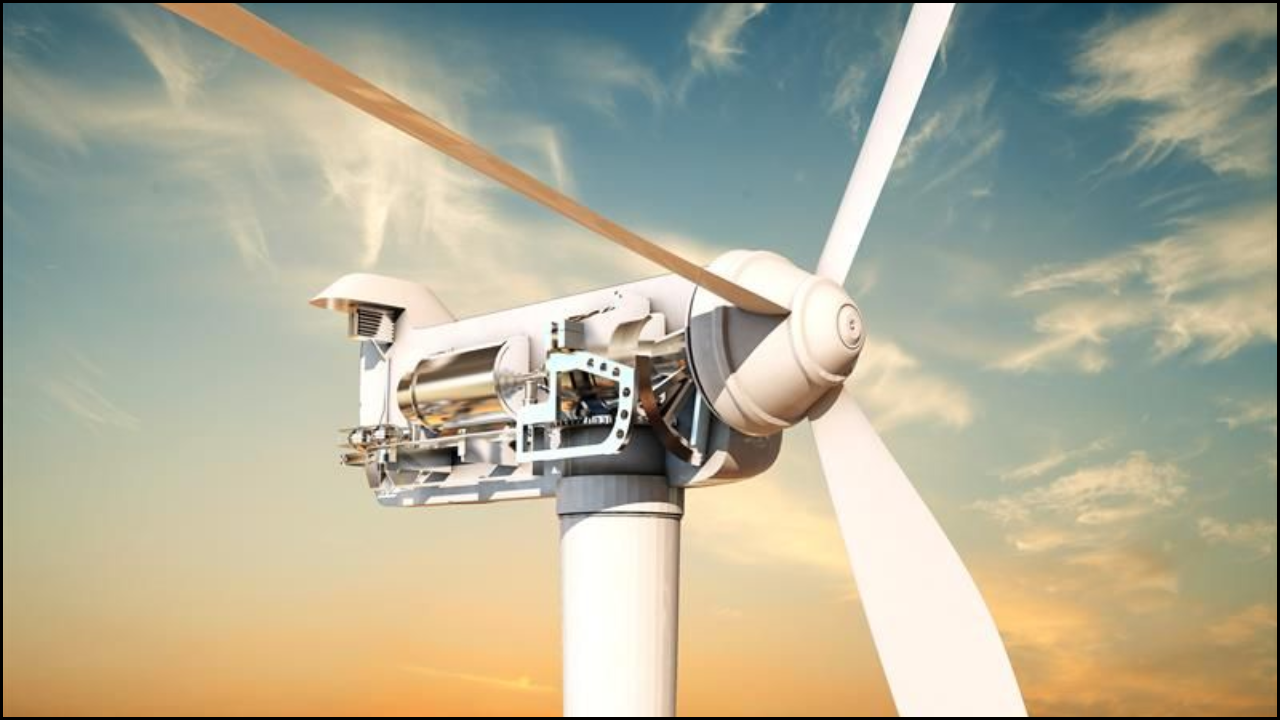
Offshore wind, tidal, and wave energy systems represent the forefront of ocean-based renewable energy technologies. Each of these systems utilizes the natural forces of the sea to generate clean electricity, offering unique benefits and challenges. Offshore wind harnesses air movement over the ocean surface, tidal systems rely on predictable lunar-driven water movement, and wave energy captures surface motion generated by wind activity. Together, they form a critical trio for diversifying global renewable energy portfolios. Understanding their differences in technology, efficiency, cost, and environmental impact helps identify the most suitable solutions for sustainable energy development.
Table of Contents
1. Overview of Marine Renewable Energy Systems
Marine renewable energy focuses on converting oceanic resources—wind, tides, and waves—into usable power through specialized technology and infrastructure.
- Offshore Wind Energy uses large turbines installed at sea to capture wind power, offering high generation capacity.
- Tidal Energy utilizes the gravitational pull of the moon and sun, producing predictable and cyclical power.
- Wave Energy converts the kinetic and potential energy of surface waves into electricity through oscillating devices.
General Comparison of Offshore Wind, Tidal, and Wave Energy
| Energy Type | Source of Power | Predictability | Global Availability |
|---|---|---|---|
| Offshore Wind | Air movement over oceans | Moderate (weather-dependent) | High |
| Tidal | Gravitational pull creating tidal flows | Very high | Limited to strong tidal zones |
| Wave | Surface motion from wind energy transfer | Moderate to high | Abundant in coastal regions |
2. Technology and Working Principles
Each energy system employs distinct mechanisms and components designed for oceanic conditions.
- Offshore Wind Turbines: These systems use towers anchored to the seabed or floating platforms equipped with rotor blades and generators. Wind turns the blades, generating mechanical energy that is converted into electricity.
- Tidal Power Systems: Tidal energy is captured through barrages, lagoons, or underwater turbines that harness either the kinetic flow of water or potential energy from water level differences.
- Wave Energy Converters (WECs): Devices such as point absorbers, oscillating water columns, and attenuators transform the motion of surface waves into mechanical energy and then into electrical power.
Key Technologies Used
| Energy Type | Primary Device | Technology Mode | Example Project |
|---|---|---|---|
| Offshore Wind | Turbine (fixed or floating) | Rotational kinetic energy | Hornsea Project, UK |
| Tidal | Barrage, lagoon, or stream turbine | Potential or kinetic energy | MeyGen, Scotland |
| Wave | Point absorber, oscillating column | Mechanical wave motion | WaveRoller, Portugal |
3. Efficiency and Energy Output
Energy efficiency and output depend on the resource availability and the technology type of each system.
- Offshore Wind systems achieve high capacity factors (35–50%) due to strong, consistent ocean winds.
- Tidal Energy offers slightly lower capacity factors (25–40%) but unparalleled predictability and scheduling potential.
- Wave Energy is still developing, with variable efficiency (20–35%) depending on wave conditions and device design.
Comparative Energy Performance
| Parameter | Offshore Wind | Tidal Energy | Wave Energy |
|---|---|---|---|
| Average Capacity Factor | 35–50% | 25–40% | 20–35% |
| Predictability | Moderate | Excellent | Moderate |
| Power Density | High | Moderate | Variable |
| Energy Consistency | Seasonal variation | Tidal cycles | Weather-dependent |
4. Cost and Investment Analysis
The cost of installation, maintenance, and operation significantly affects the commercial viability of ocean energy projects.
- Offshore Wind has achieved substantial cost reductions over the past decade due to larger turbines and economies of scale.
- Tidal Energy remains expensive, driven by complex infrastructure, site limitations, and underwater maintenance.
- Wave Energy is in the demonstration stage, facing high costs from technology immaturity and deployment challenges.
Cost Comparison
| Aspect | Offshore Wind | Tidal Energy | Wave Energy |
|---|---|---|---|
| Capital Cost (per MW) | $3–5 million | $8–12 million | $10–15 million |
| Maintenance Cost | Moderate | High | High |
| Levelized Cost of Energy (LCOE) | $70–100/MWh | $150–250/MWh | $200–300/MWh |
| Cost Trend | Decreasing | Gradually declining | Yet to stabilize |
5. Environmental and Social Impacts
All three marine energy systems contribute to low-carbon power generation but have different environmental footprints.
- Offshore Wind impacts seabird flight paths and marine noise levels during construction, but offers artificial reef benefits.
- Tidal Energy can affect sediment movement and marine habitats around barrages, though tidal streams have minimal disruption.
- Wave Energy has low ecological disturbance, as most devices are small and operate close to the surface.
Environmental Comparison
| Impact Area | Offshore Wind | Tidal Energy | Wave Energy |
|---|---|---|---|
| Carbon Emissions | Very low | Very low | Very low |
| Marine Habitat Disruption | Moderate (construction phase) | Potentially significant near barrages | Minimal |
| Noise Pollution | Medium | Low | Low |
| Visual Impact | High (visible turbines) | Low | Low |
6. Geographic Suitability and Resource Potential
The suitability of each energy type varies by region, depending on ocean conditions and coastal geography.
- Offshore Wind thrives in shallow or deep coastal areas with strong, consistent wind speeds—ideal regions include the North Sea, East Coast USA, and China’s coastlines.
- Tidal Energy requires high tidal ranges or fast-flowing currents, common in regions like the Bay of Fundy (Canada), Northern Scotland, and South Korea.
- Wave Energy performs best along western coastlines exposed to open ocean swells, such as those of Portugal, Australia, and Chile.
Geographic Resource Distribution
| Energy Type | Ideal Location | Example Regions |
|---|---|---|
| Offshore Wind | Coastal areas with steady winds | UK, USA, China, Denmark |
| Tidal Energy | Areas with strong tidal ranges | Canada, South Korea, UK |
| Wave Energy | Open ocean-facing coastlines | Portugal, Australia, Chile |
7. Technological Maturity and Future Prospects
The level of technological maturity differs across the three systems, influencing global adoption rates.
- Offshore Wind has achieved large-scale commercial maturity, with floating platforms expanding the potential to deeper waters.
- Tidal Energy is progressing toward commercialization through pilot farms and international collaboration.
- Wave Energy remains in the prototype stage, with future promise tied to design simplification and hybrid offshore systems.
Technological Readiness
| Parameter | Offshore Wind | Tidal Energy | Wave Energy |
|---|---|---|---|
| Maturity Level | Fully commercial | Pre-commercial | Experimental |
| Installed Capacity (2025 est.) | 80+ GW | 1 GW | <0.5 GW |
| Growth Trend | Rapid expansion | Steady pilot growth | Research-focused |
| Future Potential | Global deep-sea deployment | Predictable base-load supply | Complementary to wind power |
8. Integration into Global Energy Systems
Integration of ocean-based renewables enhances grid stability, energy diversity, and sustainability.
- Offshore Wind offers large-scale, grid-ready energy, making it suitable for national energy transitions.
- Tidal Energy provides a predictable output that balances variable sources like wind and solar.
- Wave Energy can serve as a supplemental source, especially in hybrid offshore platforms combining multiple technologies.
Role in Energy Systems
| Energy Type | Grid Role | Integration Benefit |
|---|---|---|
| Offshore Wind | Major renewable contributor | High output capacity |
| Tidal Energy | Predictable power stabilizer | Complements variable renewables |
| Wave Energy | Supplementary resource | Enhances energy mix diversity |
Looking Ahead
Offshore wind, tidal, and wave energy systems collectively represent the ocean’s immense potential to power the world sustainably. Offshore wind leads in technological maturity and cost efficiency, making it the most commercially successful. Tidal energy excels in predictability and reliability, offering stable generation to balance renewable grids. Wave energy, though still developing, holds promise as a flexible and complementary resource. Continued innovation, policy support, and international collaboration will determine how effectively these ocean-based technologies work together to achieve a cleaner and more resilient global energy future.





